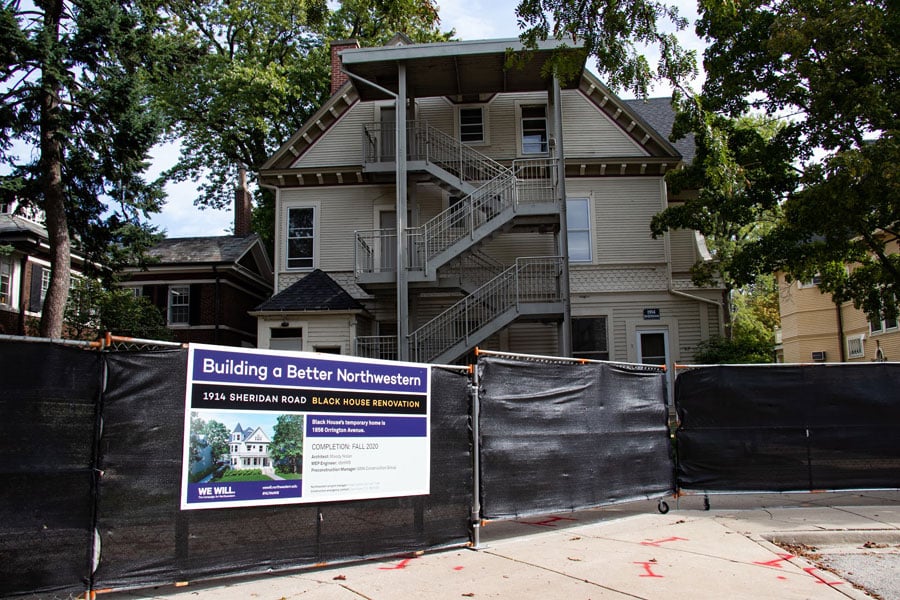Black students are adjusting to the temporary Black House, anticipating renovations
Evan Robinson-Johnson/Daily Senior Staffer
The original location of the Black House, on 1914 Sheridan Road. The Sheridan location has been closed for renovations and will open Fall 2020. However, a temporary location on 1856 Orrington Ave. is open to the Northwestern community until renovations are completed.
November 18, 2019
A temporary Black House sign marks a small residence hall at 1856 Orrington Ave., where organizations, students and staff congregate while the Black House undergoes renovations. But many students said the temporary location doesn’t have the same charm as the original Black House.
Students came in and out of the temporary Black House as temperatures dropped below freezing this week. Faculty and staff shared leftover food with students. Organizations moved upstairs for their weekly meetings. Students also enjoyed downtime between their obligations.
The Black House Renovations Steering Committee spent Spring Quarter touring potential spaces for the temporary Black House that would fit students’ needs. The space the committee ended up selecting is a small residence hall with two floors that has staff offices and student spaces on both levels.
While some students said they are adjusting to the temporary space, they said they are excited to return next year to the renovated Black House at 1914 Sheridan Road. SESP senior Ayana Davis said the Black House is an important space for the black community at NU, created by black alumni.
“It is a nice bubble where I know people are there to support me,” said Davis. “People are able to get all of these resources, like food, here.”
Davis said she uses the temporary location less than the original location. She added that she does not use other spaces on campus more and instead spends the additional time in her room. The temporary space does not have the warmth of the original Black House, she said.
“The Black House was literally a house,” Davis said. “Now, all of the offices are in one area and it isn’t as big. They are two very different spaces and the intentions of the spaces are very different.”
Communication sophomore Sophia Simon shared similar sentiments to Davis. She said she spent so much time in the original Black House, but unlike Davis, she does frequent the temporary Black House.
Outside of her classes, she said she spent the majority of her time in the original Black House last year.
“I feel like I can be comfortable and be myself in this space,” Simon said. “It’s a safe space for community.”
Simon said many of the clubs she’s involved in, such as For Members Only, the University’s black student alliance, and Soul4Real a cappella, meet at the Black House.
Despite the temporary Black House space being smaller, she said she does not use other spaces on campus instead.
“I am in my room more,” Simon said. “I think that since the transition to the temporary Black House and since I live on North campus now as opposed to South campus, the only other alternative is my room.”
Simon said the new space meets her needs to a certain extent, but the Black House on Sheridan was more “homey.” She said she does not get the same sense of comfort at the temporary location because it feels much more like an office. Despite that, she said she still does her homework there.
The temporary Black House, which has two floors consisting of offices, conference rooms, a kitchen, a computer lab and community space is small in size compared to the four-story original Black House.
Weinberg senior Amira Richards said the temporary space looks more like a campus dorm. After visiting once this year, she said she has not been back.
“This kind of transition makes me feel like the temp space is more sterile,” Richards said. “The light was not good enough, and I couldn’t do any work past sundown.”
Email: [email protected]
Twitter: @ahlaamdelange


